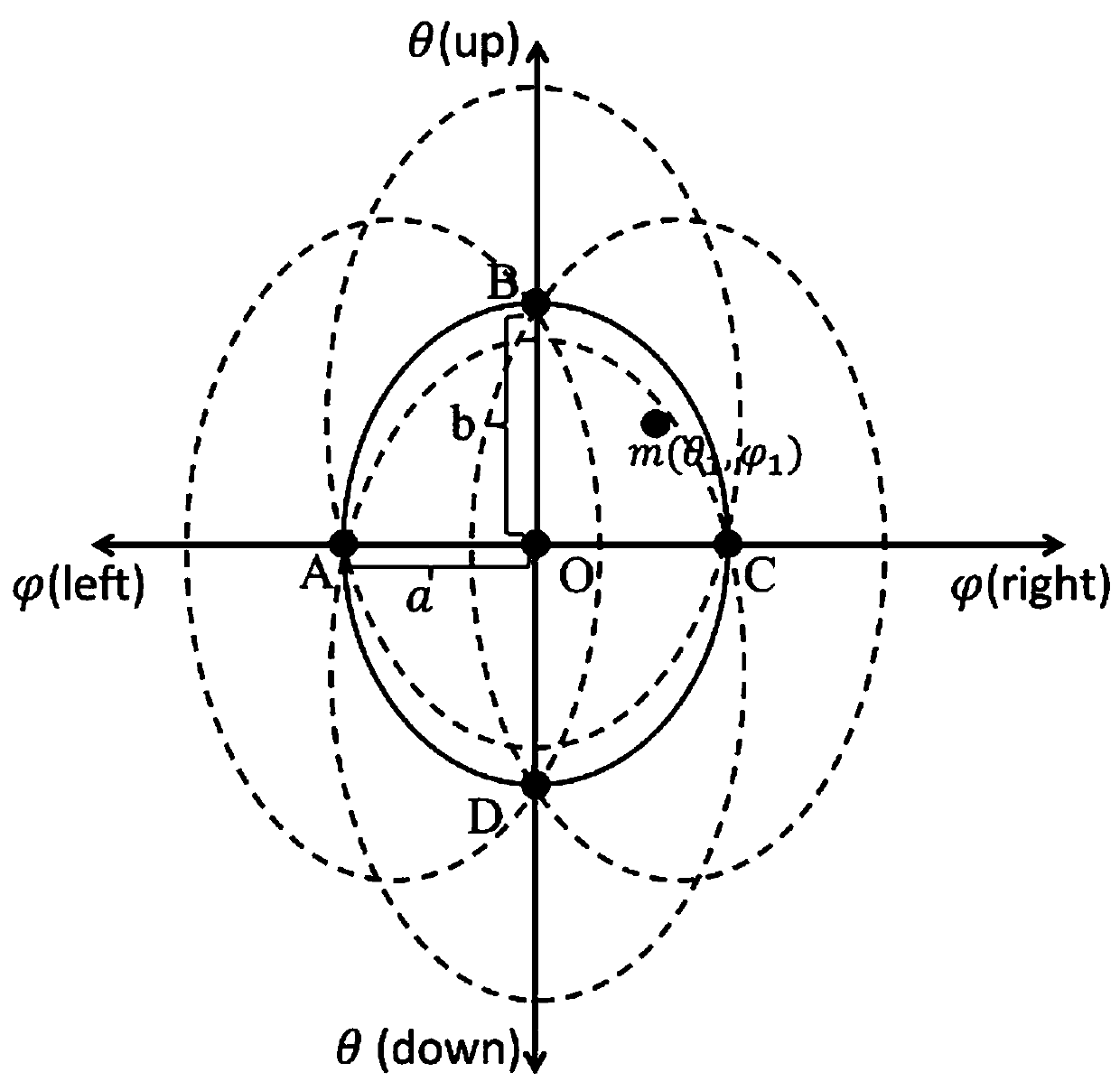VICTS antenna four-point tracking algorithm
A tracking algorithm and four-point technology, applied in the field of satellite communication antennas, can solve problems such as easy tracking errors and low efficiency, and achieve the effects of good engineering practicability, improved speed and tracking efficiency, and improved accuracy and tracking efficiency.
- Summary
- Abstract
- Description
- Claims
- Application Information
AI Technical Summary
Problems solved by technology
Method used
Image
Examples
Embodiment 1
[0045] Such as figure 1 As shown, a kind of VICTS antenna four-point tracking algorithm provided in this embodiment comprises the following steps:
[0046] Step S101, performing a pattern test on the VICTS antenna to obtain the far-field pattern of the antenna whose beam center changes according to the pitch angle;
[0047] Step S102, performing beam modeling according to the antenna far-field pattern in step S101;
[0048] Such as figure 2 As shown, for the antenna gain f, pitch angle θ, and azimuth φ of the antenna far-field pattern, formula (1) is used to model the elliptical paraboloid, and the beam parameters a and b under different beam center pitch angles are obtained;
[0049]
[0050] Among them, θ is the elevation angle, φ is the azimuth angle, and f is the antenna gain.
[0051] The beam parameters a and b at different beam center elevation angles are obtained by using the least square method, specifically:
[0052] First, the beam is modeled in the azimuth ...
Embodiment 2
[0074] In step S201, the pattern test of the VICTS antenna is carried out in the microwave anechoic chamber, and the pattern of the beam center changing with the elevation angle of 0.5° is obtained.
[0075] Step S202, using the gain data with a gain drop of 1db in each directional graph, modeling the directional graph with an elliptical parabola, and using the least squares method to obtain a model result with a variance of less than 0.01; when the pitch angle is 45° and the azimuth angle is 20° The beam pattern of is:
[0076]
[0077] Step S203, rotate the center of the beam to four equal gain points A, B, C, and D, obtain the receiving level values of the four equal gain points, and calculate the level difference, the level of point A minus point C The difference is -4.72, the level difference between point B minus point D is -6.17, and then the difference in direction angle and pitch angle of the target direction relative to the initial beam center is obtained by for...
PUM
 Login to View More
Login to View More Abstract
Description
Claims
Application Information
 Login to View More
Login to View More - R&D
- Intellectual Property
- Life Sciences
- Materials
- Tech Scout
- Unparalleled Data Quality
- Higher Quality Content
- 60% Fewer Hallucinations
Browse by: Latest US Patents, China's latest patents, Technical Efficacy Thesaurus, Application Domain, Technology Topic, Popular Technical Reports.
© 2025 PatSnap. All rights reserved.Legal|Privacy policy|Modern Slavery Act Transparency Statement|Sitemap|About US| Contact US: help@patsnap.com



